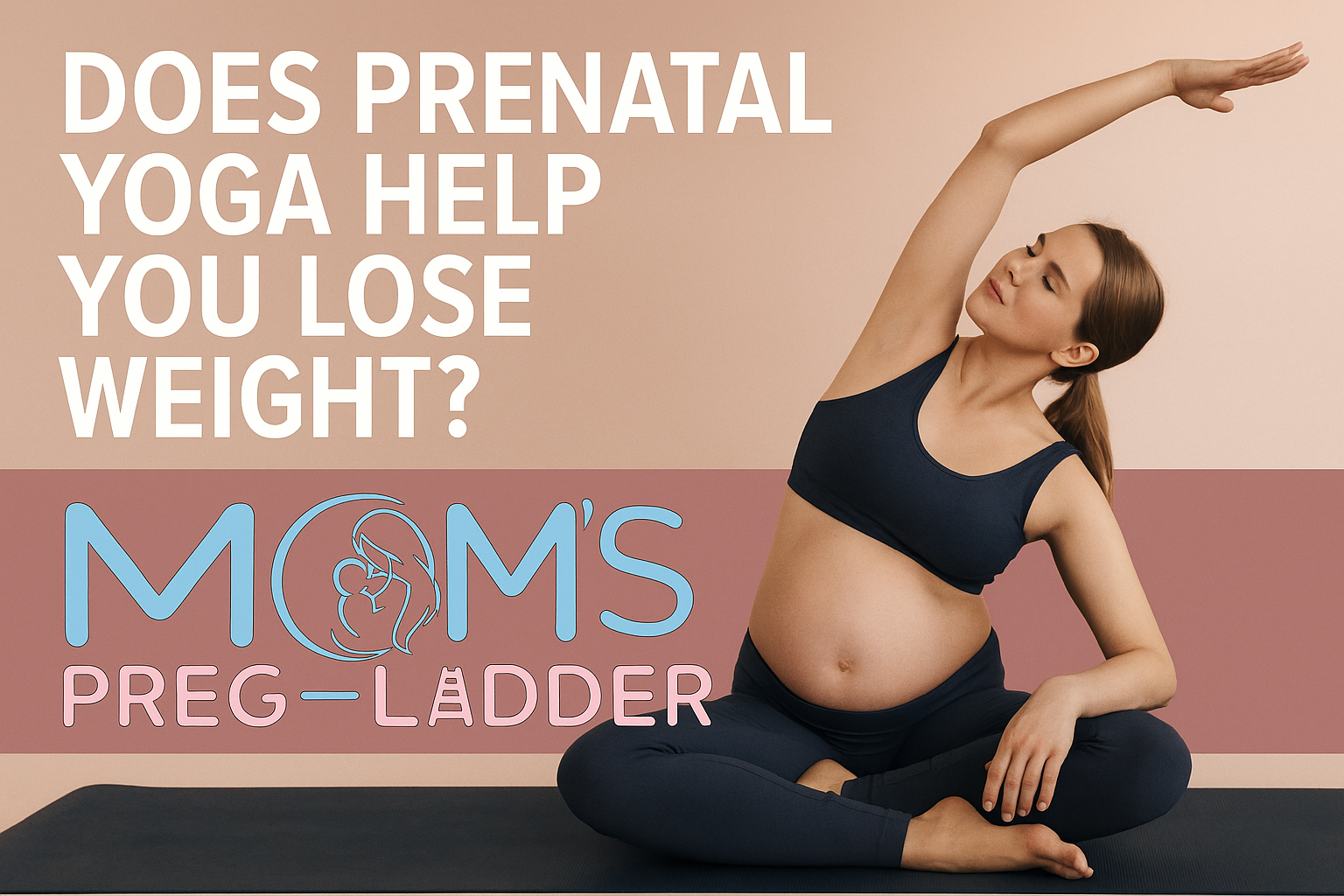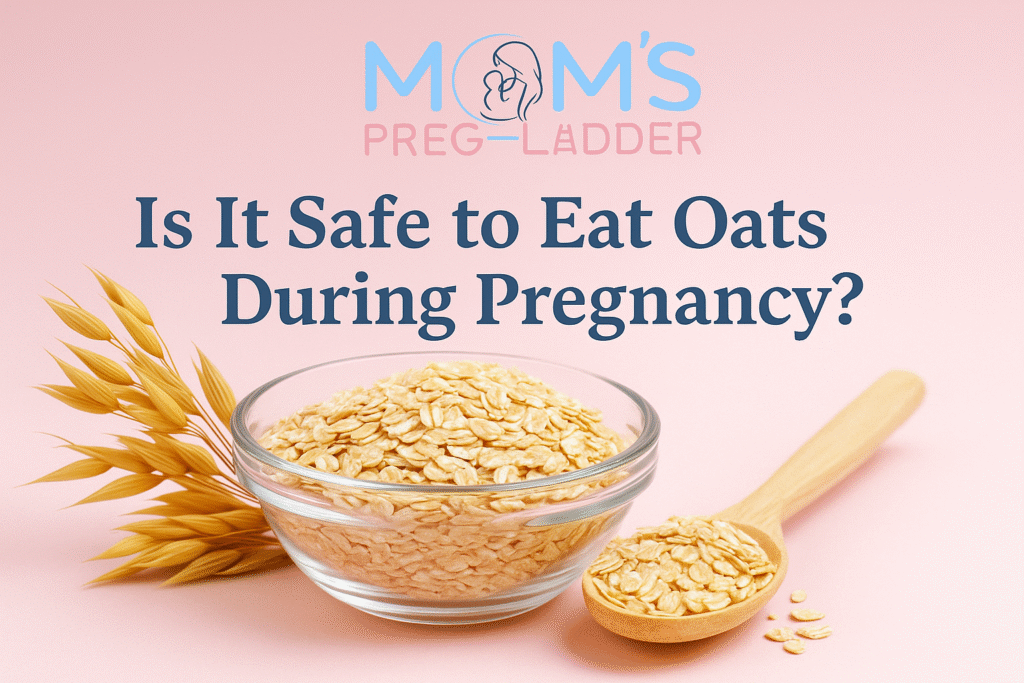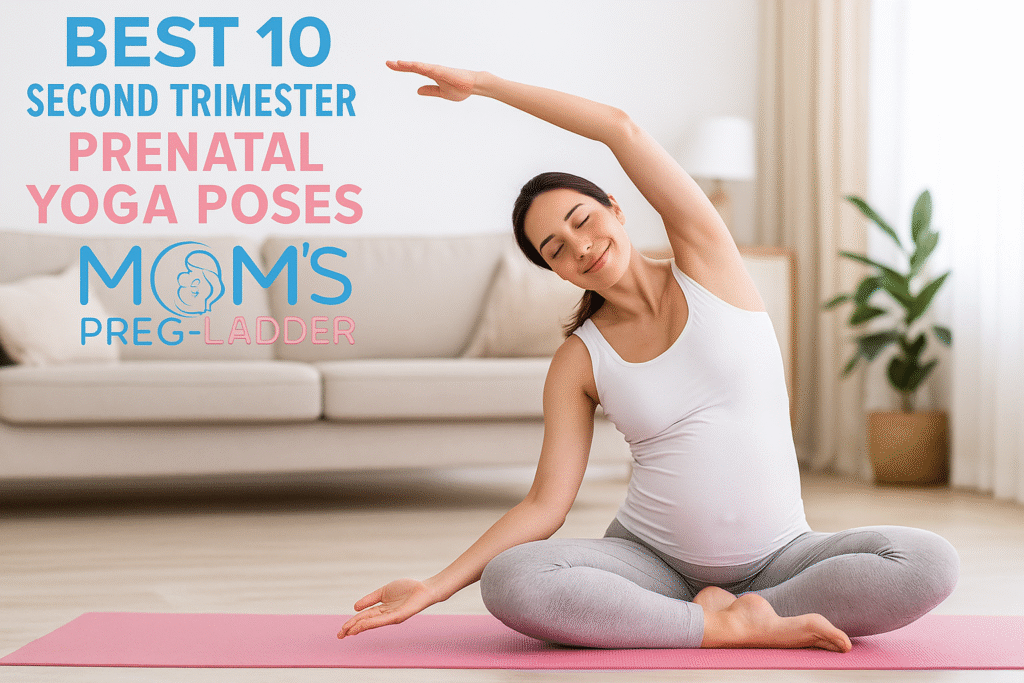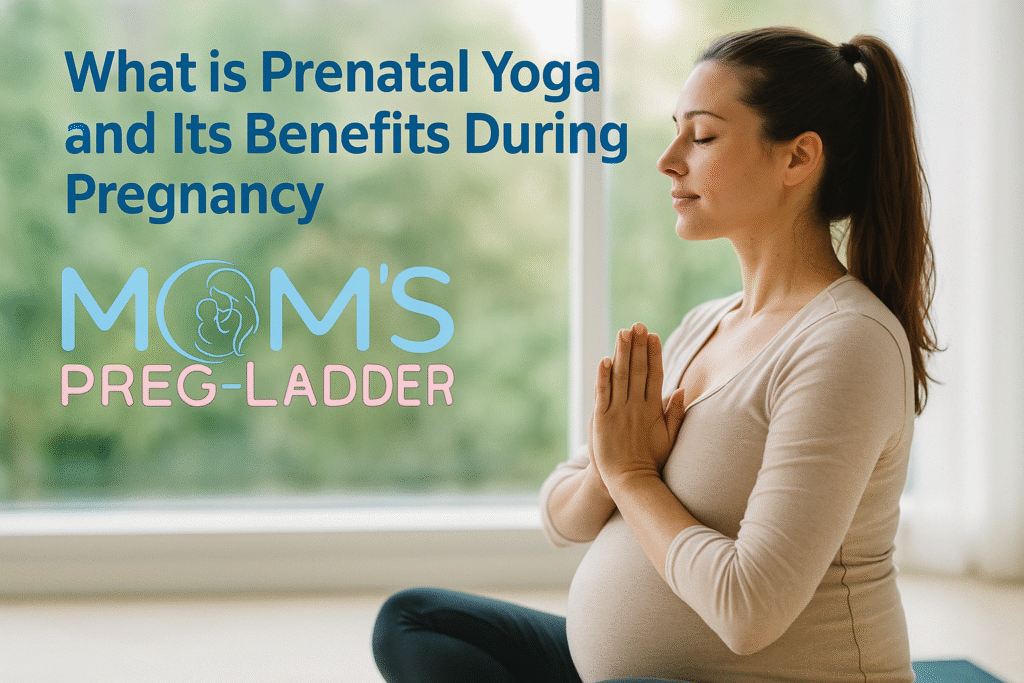Pregnancy can be an exciting time filled with a million questions, including concerns about weight. You might be wondering, “Can prenatal yoga help with weight?” The answer is both yes and no. While prenatal yoga isn’t a magic weight-loss solution, it can be a wonderful tool for supporting healthy weight gain during pregnancy and returning to pre-pregnancy weight postpartum. Let’s explore the science and experience of prenatal yoga and weight management.
Understanding Weight Gain During Pregnancy
First of all, know that gaining weight during pregnancy is normal and essential for your baby’s development. According to the American College of Obstetricians and Gynecologists, your recommended weight gain depends on your pre-pregnancy BMI. Healthy pregnancy weight gain includes your baby’s weight, placenta, amniotic fluid, increased blood volume, breast tissue, and extra fat stores needed for breastfeeding. Instead of focusing on weight loss, prioritize gaining weight in a healthy, balanced way, something that pregnancy yoga classes in Thane can also help support through gentle movement and mindful wellness.
What Prenatal Yoga Actually Does for Your Body
Prenatal yoga is a form of yoga that has been adapted to be safe and beneficial for pregnancy. Prenatal yoga classes differ from standard yoga classes in that they will modify poses to be safe during pregnancy, use specific breathing techniques to help with labor, and include movements to help with pregnancy related aches and pains.
Physical Benefits of Regular Prenatal Yoga Practice
- Metabolic Support and Calorie Burning
Yes, while prenatal yoga is often less intense than other forms of high-impact exercise, it can still help burn calories and promote a healthy metabolism. On average, a prenatal yoga class can burn between 150 to 250 calories per hour, depending on the intensity and your weight. It’s a moderate-intensity exercise similar to a brisk walk, so it is a safe and effective way to stay active throughout pregnancy.
- Muscle Tone and Strength Building
Prenatal yoga helps maintain and build lean muscle mass, particularly in areas that need extra support during pregnancy:
- Core muscles that support your growing belly
- Pelvic floor muscles crucial for labor and recovery
- Leg and hip muscles that bear additional weight
- Upper body strength for carrying your baby postpartum
Muscle tissue burns more calories at rest than fat tissue, so maintaining muscle tone through prenatal yoga can support healthy metabolism throughout pregnancy and beyond.
- Circulation and Fluid Balance
Swelling and water retention are common in pregnancy. The movements and inversions in prenatal yoga improve circulation and lymphatic drainage, helping to decrease the retention of extra fluids that can add to pregnancy weight gain.
The Hormonal Connection: Stress, Cortisol, and Weight
One of the less obvious, but perhaps most profound ways that prenatal yoga can influence your weight during pregnancy is through its impact on your stress hormones.
When you’re under chronic stress, your body produces more cortisol (a stress hormone), which can increase your appetite, make you crave high-calorie foods and promote excessive weight gain.
Prenatal yoga has been found to significantly reduce stress and anxiety in pregnant women. By keeping your stress levels in check through regular practice, you are supporting the regulation of cortisol and other stress hormones that influence your eating patterns and help you gain a healthier weight.
Diaphragmatic breathing and ujjayi breath, two breathing techniques emphasized in prenatal yoga, stimulate the parasympathetic nervous system, which puts your body into a “rest and digest” mode. This can help normalize your appetite signals and curb stress-induced eating.
Prenatal Yoga’s Role in Preventing Excessive Weight Gain
Research on prenatal yoga’s benefits have also shown promising results when it comes to weight loss:
A systematic review published in the Journal of Obstetric, Gynecologic & Neonatal Nursing reported that women who practiced prenatal yoga regularly during pregnancy were more likely to maintain a recommended weight gain compared to women who did not exercise during pregnancy. In this review, those who practiced yoga gained 2 to 3 pounds less on average than the group that did not exercise. In addition, the study reported that yoga practitioners gained a healthy amount of weight overall.
In a separate study published in BMC Pregnancy and Childbirth, researchers found that pregnant women who attended weekly prenatal yoga classes were more likely to have an appropriate gestational weight gain and a lower risk of pregnancy complications associated with excessive weight gain.
The research around prenatal yoga and weight loss indicates that while you probably won’t lose weight while pregnant if you start doing prenatal yoga, it may help prevent excessive weight gain beyond what is healthy for both you and your baby.
Please Read More – Does Prenatal Yoga Help with Labor Pain?
How Moms Preg Ladder Supports Your Prenatal Yoga Journey
Trying to find trusted, evidence-based information during your pregnancy can feel like you’re drinking from a fire hydrant with so much mixed messaging out there. Moms Preg Ladder has a wealth of resources and support just for moms expecting to navigate pregnancy wellness.
Learn about safe movement options for each trimester including which prenatal yoga sequences are best for where you are in your pregnancy. Whether you are a yoga newbie or you are a seasoned yogi pre-pregnancy, Moms Preg Ladder helps you know which yoga poses to lean into, which to modify and which to skip.
Practical Aspects: What to Expect from Prenatal Yoga Practice
Creating a Sustainable Practice
Consistency matters more than intensity when it comes to prenatal yoga’s benefits for weight management. Here’s what a balanced approach looks like:
- Frequency: Aim for 2 to 4 prenatal yoga sessions per week, lasting 30 to 60 minutes each
- Timing: Any time of day works, though many women find morning sessions help with nausea and evening sessions improve sleep
- Progression: Start with beginner-friendly classes in the first trimester and adjust as your pregnancy advances
- Listening to your body: Honor fatigue, discomfort, or any warning signs by modifying or resting as needed
Key Prenatal Yoga Poses That Support Healthy Weight Management
While every prenatal yoga class varies, certain poses appear frequently because of their particular benefits during pregnancy:
Standing and Balancing Poses
- Warrior II and Triangle Pose strengthen legs and improve balance
- Modified Tree Pose builds stability and focuses the mind
- Goddess Pose opens hips and strengthens thighs
Seated and Floor Poses
- Cat-Cow stretches relieve back tension and improve spinal mobility
- Child’s Pose (with modifications) provides rest and hip opening
- Seated Forward Fold variations stretch the back body gently
Breathing and Relaxation
- Pranayama techniques reduce stress and improve oxygen flow
- Guided meditation supports emotional wellbeing
- Savasana (modified with side-lying position) promotes deep relaxation
These poses work together to maintain strength, flexibility, and mental clarity—all factors that contribute to overall health and appropriate weight management during pregnancy.
Beyond the Mat: Lifestyle Factors That Matter
Prenatal yoga works best as part of a holistic approach to pregnancy health. The mindfulness you build during practice naturally extends into daily life, helping you stay calm, centered, and aware which is why many moms-to-be look for the best yoga classes for pregnancy to support their overall wellness.
Mindful Eating Practices
The body awareness developed through prenatal yoga can help you recognize genuine hunger cues versus emotional eating. Many practitioners report that yoga helps them slow down during meals, chew thoroughly, and notice fullness signals more effectively.
Improved Sleep Quality
Prenatal yoga, particularly evening sessions focused on relaxation, can significantly improve sleep quality. Better sleep is associated with healthier weight gain patterns and reduced cravings for high-calorie foods.
Reduced Pregnancy Discomfort
By alleviating common pregnancy complaints like back pain, hip discomfort, and leg cramps, prenatal yoga makes it easier to stay active throughout your day. Women who feel physically better are more likely to take walks, maintain household activities, and engage in other gentle movements that support healthy weight gain.
Medical Considerations and Safety Guidelines
Before starting any exercise program during pregnancy, including prenatal yoga, discuss your plans with your healthcare provider. Most women with uncomplicated pregnancies can safely practice prenatal yoga, but certain conditions require special precautions or modifications:
When to Exercise Extra Caution:
- High-risk pregnancies or history of preterm labor
- Placenta previa or other placental complications
- Severe anemia or cardiovascular conditions
- Persistent bleeding during pregnancy
- Pregnancy-induced hypertension or preeclampsia
Your prenatal yoga instructor should be certified in prenatal instruction and will work with you to modify poses based on your specific needs and any medical considerations.
Warning Signs to Stop and Seek Medical Attention:
- Vaginal bleeding or fluid leakage
- Severe shortness of breath before exertion
- Chest pain or rapid heartbeat
- Dizziness or feeling faint
- Painful contractions or suspected labor
- Decreased fetal movement
How Moms Preg Ladder Provides Evidence-Based Guidance
When seeking guidance on pregnancy health and wellness, it’s crucial to consult sources that are not only informative but also grounded in medical expertise. Moms Preg Ladder takes pride in offering content that is vetted by healthcare professionals, ensuring that the information you receive is in line with the latest obstetric guidelines.
Understanding the importance of prenatal fitness, including yoga, Moms Preg Ladder advocates for safe and beneficial practices. We understand the allure of yoga for many women, but safety is our top priority. Our platform offers insights into how yoga can be part of a healthy pregnancy routine, provided it’s practiced mindfully and without risk.
Moreover, we address the often-pressuring topic of weight loss during pregnancy with a clear message: Moms Preg Ladder is not a tool for achieving drastic weight changes while expecting. Instead, we are dedicated to promoting healthy pregnancies through balanced nutrition, appropriate exercise, and overall mental wellbeing.
Combining Prenatal Yoga With Other Healthy Habits
Complementary Activities for Optimal Health
Prenatal yoga works beautifully alongside other pregnancy-safe activities:
- Walking: Daily walks complement yoga by providing additional cardiovascular benefits
- Swimming: The buoyancy of water provides relief while offering full-body exercise
- Prenatal strength training: Light weights or resistance bands can maintain muscle tone
- Pelvic floor exercises: Kegels and other pelvic floor work support yoga practice
Nutritional Considerations
While this article focuses on exercise, nutrition plays an equally important role in healthy pregnancy weight gain. Prenatal yoga may make you more attuned to your nutritional needs, helping you choose foods that provide sustained energy rather than quick sugar spikes.
Focus on nutrient-dense whole foods, adequate protein for muscle maintenance, healthy fats for baby’s brain development, and complex carbohydrates for energy. The mindfulness developed through yoga practice can extend to mindful eating, helping you recognize true hunger and fullness cues.
Creating Your Personal Prenatal Yoga Practice
Whether you attend studio classes, follow online videos, or practice at home, creating a sustainable prenatal yoga routine involves finding what works for your schedule, preferences, and energy levels.
Getting Started:
- Find qualified instruction: Look for certified prenatal yoga instructors or established online platforms like Moms Preg Ladder that offer vetted prenatal content
- Invest in basic props: A yoga mat, blocks, bolsters, and blankets help with modifications
- Wear comfortable clothing: Choose breathable, stretchy fabrics that accommodate your growing belly
- Create a peaceful space: Designate a calm area for home practice
- Set realistic goals: Start with one or two sessions weekly and build gradually
Building Consistency:
The benefits of prenatal yoga for weight management and overall health accumulate with regular practice. Life gets busy during pregnancy, but even 15 to 20 minutes of gentle yoga several times per week provides meaningful benefits.
Conclusion: A Balanced Perspective on Prenatal Yoga and Weight
Let’s go back to the original question: prenatal yoga is for keeping a healthy weight gain while you are pregnant, rather than for losing weight. This is important, as we are not looking to lose weight when pregnant, but pregnancy is the perfect time to learn sustainable healthy habits to last you for life, not just during the pregnancy.
Prenatal yoga can help you manage a healthy weight gain during pregnancy. The ways this happens include light calorie burn, maintenance of muscle mass, reduction of stress and improved sleep, and increasing your body awareness. It is important to set appropriate expectations when beginning prenatal yoga. It is best to start with a reputable book or DVD, talk to your doctor, and to go into your practice with an open mind. As with all of pregnancy, your experience will be unique to you and your baby.
Above all else, the goal is to find a way of doing things that is sustainable to support yourself and your developing baby. For many women, prenatal yoga will be an important and enjoyable part of a healthy pregnancy. It can help you keep a healthy weight gain, prepare your body for labor, and to recover postpartum with the right preparation and mindset. For more information on prenatal yoga as well as all things pregnancy, please visit Moms Preg Ladder for more resources.













